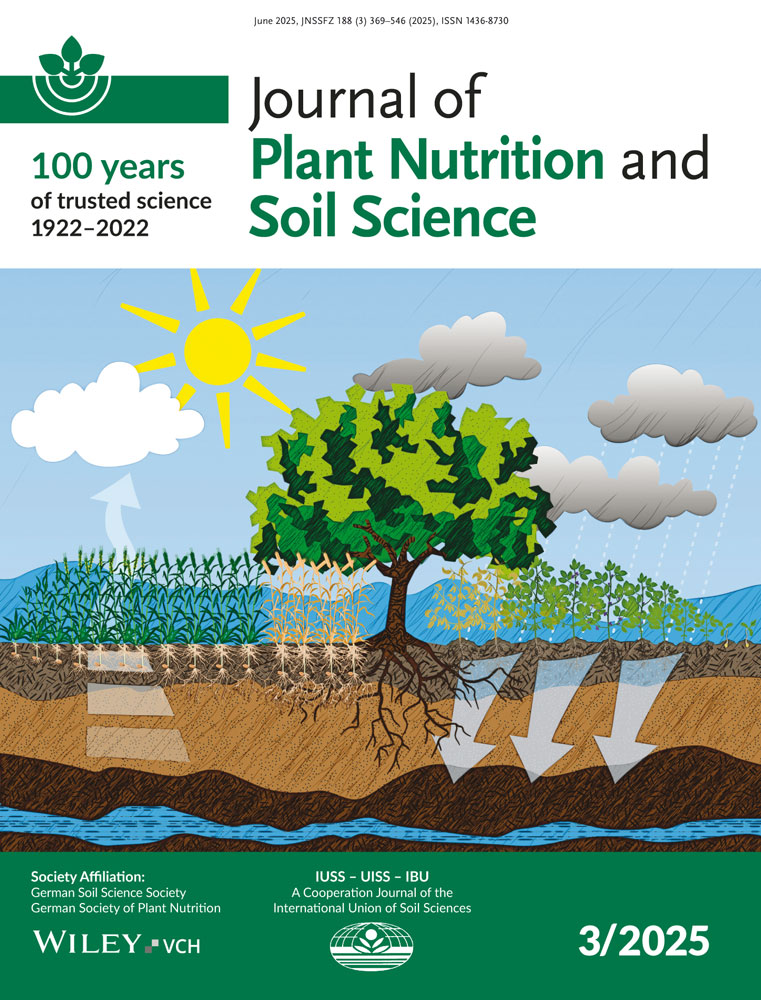Bodensystematik und Bodenklassifikation Teil I: Grundbegriffe
Abstract
deBodenordnungssysteme lassen sich meist nach zwei Prinzipien entwickeln: Entweder werden nur rein bodenkundliche Informationen als kategorisierendes Merkmal verwendet (pedogenetische Faktoren/Prozesse), oder die Kategorienbildung erfolgt problemorientiert anhand ausgewählter Parameter. Die meisten der weltweit verwendeten Bodenordnungssysteme lassen sich nach ihrer Grundausrichtung einem der beiden Typen zuordnen. Diese Betrachtungsweise ist nicht neu und wird in der Literatur mit unterschiedlichen Begriffen und Begriffsinhalten dargestellt.
In der vorliegenden Arbeit werden die verschiedenen Definitionen von Systematik, Klassifikation, Taxonomie und Identifizierung zusammengefasst und geordnet. Dabei fällt auf, dass Begriffe mit sehr unterschiedlichen Inhalten oft synonym verwendet werden.
Grundgedanke unserer Überlegungen ist die Trennung von Systematik, Klassifikation und Identifizierung. Systematik ist die grundsätzliche wissenschaftlich-deduktive Gliederung von Objekten in systematische Einheiten. Dabei soll das gesamte Wissen eines Fachgebietes in eine überschaubare Form gebracht werden, im Mittelpunkt stehen sowohl die umfassende Beschreibung einzelner Objekte als auch die Beziehungen zwischen den Objekten. Im Gegensatz dazu ist eine Klassifikation die zielorientiert-induktive Gliederung von Objekten. Die entstehenden Klassen werden nur anhand ausgewählter Parameter abgegrenzt, womit ein schneller Überblick bei speziellen Fragestellungen ermöglicht wird. Die Identifizierung ist die Einordnung von neuen Objekten in eine bestehende Systematik oder Klassifikation.
Eine zweifelsfreie Identifizierung erfordert die Messbarkeit der kategorisierenden Merkmale. Bei einer genetisch angelegten Bodensystematik sind die Merkmale die Boden bildenden Prozesse und Faktoren. Da sie beim gegenwärtigen Kenntnisstand oft nicht messbar sind, bleiben Versuche, einen Boden in eine Systematik einzuordnen, häufig hypothetisch und dadurch subjektiv. Die Ergebnisse einer Bodensystematisierung sind daher oft anfechtbar, weil sie nicht durch Messwerte verifiziert werden können. Im Gegensatz dazu erlauben Bodenklassifikationen objektive Profilansprachen. Da jedoch die Festlegung der Grenzwerte eher pragmatisch nach Zweckmäßigkeit geschieht und nicht wissenschaftlich anhand von Prozessintensitäten, ist die Verwendung als grundlegendes Ordnungssystem eines Wissenschaftsgebietes nicht möglich.
Die Bodenkunde benötigt beide Arten von Ordnungssystemen, um wissenschaftliche und praktische Ansprüche gleichermaßen erfüllen zu können, jedoch erfordern die Vollendung und Verifizierung der Systematik umfangreiche Forschungsarbeiten. Kurzfristig ist dieses Problem nur durch die Entwicklung einer kennwertbasierten Klassifikation lösbar, mit der die Kategorien der bestehenden Systematik so gut wie möglich nachgebildet werden. Langfristig ist die exakte Erforschung und Modellierung der Boden bildenden Prozesse aber unumgänglich.
Abstract
enSoil systematics and classification systems Part I: Fundamentals
Soil-ordering systems are primarily based and developed on one of two underlying principles: They are either categorized according to soil-forming processes, or the formation of categories develops by chosen parameters. This perspective has already been established in the literature, though it is often confusing as many terms are defined and applied differently.
In this contribution, the various definitions of systematics, classification, taxonomy, and identification will be clearly differentiated and summarized. The core of our work is to clearly define and contrast three terms: systematics, classification, and identification. Systematics is the fundamental scientific and deductive ordering of objects into systematic units. The purpose of this approach is to organize the entire spectrum of knowledge within a discipline into a transparent and manageable form. Classification, in direct contrast to systematics, is goal-oriented and an inductive ordering of objects. Thus, the ordering scheme consists of classes which are clearly parameterized. Identification is the ordering of new objects into an already existing systematics or classification system. Close attention is paid to both the differences and the similarities between a systematics and a classification system, especially pertaining to their practical applications.
The identification requires that the category-forming characteristics can be measured (e.g., for soil systematics, these are the soil-forming processes and factors). Currently, it is unfortunately not feasible to objectively quantify most soil-forming processes. Thus, most attempts at categorizing soils by systematics are hypothetical and highly subjective in nature. The resulting identification derived from the soil systematics approach is open to questions and contestable, since a graded measuring system does not yet exist to verify these determinations. In contrast, a soil-classification system does allow an objective soil-profile identification, although such systems are conceived pragmatically and designed for a practical purpose (e.g., not scientifically based on process intensities). Unfortunately, such a classification system cannot be applied as a universal scientific categorization system due to this method of conception.
Both categorization approaches are required in soil science in order to satisfy both the practical and the scientific aspects of the field. However, substantial research must be done to complete and verify systematics. The only viable short-term solution is through the development of a graded classification system where the categories of the system are directly derived from the current systematics approach. In the long run both the exact investigation and the detailed modeling of the soil-forming processes are inevitable.




